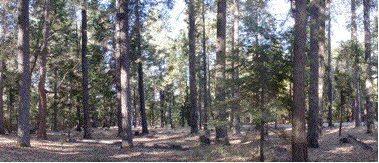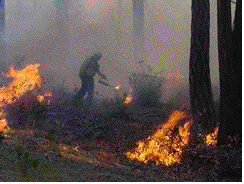Forests a growing responsibility
This is an editorial by Tahoe National Forest Supervisor Steve Eubanks.
(Submitted by Ann Westling, Public Affairs Officer, Tahoe National Forest)
Forests of the world, the U.S., the west and certainly of the Sierras, are a growing responsibility. They are growing literally in terms of the biomass they are accumulating every day. And forests provide many values that are growing in importance every day. All of us, whether as owners of public forests or owners of our own forest land share a responsibility to protect those values.
Forests provide resources we all cherish—water for drinking, agriculture, fisheries, and recreation; wildlife habitat; recreation; renewable forest products and places for spiritual appreciation. Increasingly, forests have become a place for home development. Statistics show that 60% of new homes in the U.S. are being built in and around forests. As valuable as forests and forest resources are today, their value can only continue to increase as our world becomes more populated.
As the value of forest resources increases, so does the threat to those resources. The growth of trees and other vegetation in our forests and the effects of global climate change are causing forests to become overcrowded and more susceptible to large, high intensity wildfires. Wildfire is a natural part of most forest ecosystems in the West. Prior to European settlement, fire from lightning and American Indian burning was a regular occurrence in Sierra forests. Because fires occurred frequently, they removed understory vegetation while it was still small and the fires were mostly low intensity. Forests were therefore typically more open with widely-spaced larger trees. Today, forests have an unnaturally large buildup of smaller trees and understory vegetation

so when wildfires occur they are usually not “natural.”

In addition, overcrowding in forests increases susceptibility to insect-caused mortality which further increases wildfire hazard.
Fortunately, there are conceptually and operationally-simple ways to reduce the wildfire hazard in forests. On national forests there are projects designed to thin out the trees and remove understory vegetation.

This provides immediate benefits by directly reducing fuels; but, our longer-term goal is to have a more open forest with larger trees where low intensity fire can once more be accommodated without threat to resources and communities. This kind of thinning can also reduce the threat of insect infestation. Thinning is often followed by managed understory fire

as a safe way to reintroduce and maintain fire in our forest ecosystems over time.
There is still controversy about active management of forests—how much, where and what kind. Some people advocate just letting nature take its course and allowing wildfires to burn. But simply letting fires burn throughout the Sierras is not a reasonable option, especially given the increased human occupancy in the interface between cities and forestland. However, there is an increasing level of understanding that some management is needed to provide long-term protection of forest resources. Both forest science and extensive experience have shown the benefits of thinning and understory burning in reducing wildfire intensity and size, in providing more options for safe and effective wildfire suppression and, more importantly, in protecting forest resources and communities. In addition, reducing wildfires also helps reduce the production of atmospheric carbon that has been shown to be a primary contributor to global climate change.
Forests, whether public forests, large private forests or small forest plots on homesteads, are truly a blessing because of the values they provide to society. But they also represent a responsibility that we all share. If we value forests and forest resources, we need to redeem our responsibility by implementing the level of management that is appropriate and necessary. While there are certainly parts of our forests where we can safely adopt more of a “hands-off” approach, we must do so consciously with knowledge of the likely effects and tradeoffs, not as a dogmatic or “easy” approach in general. Forests truly represent a responsibility that is growing and a growing responsibility that we should not, cannot take for granted.














Post new comment